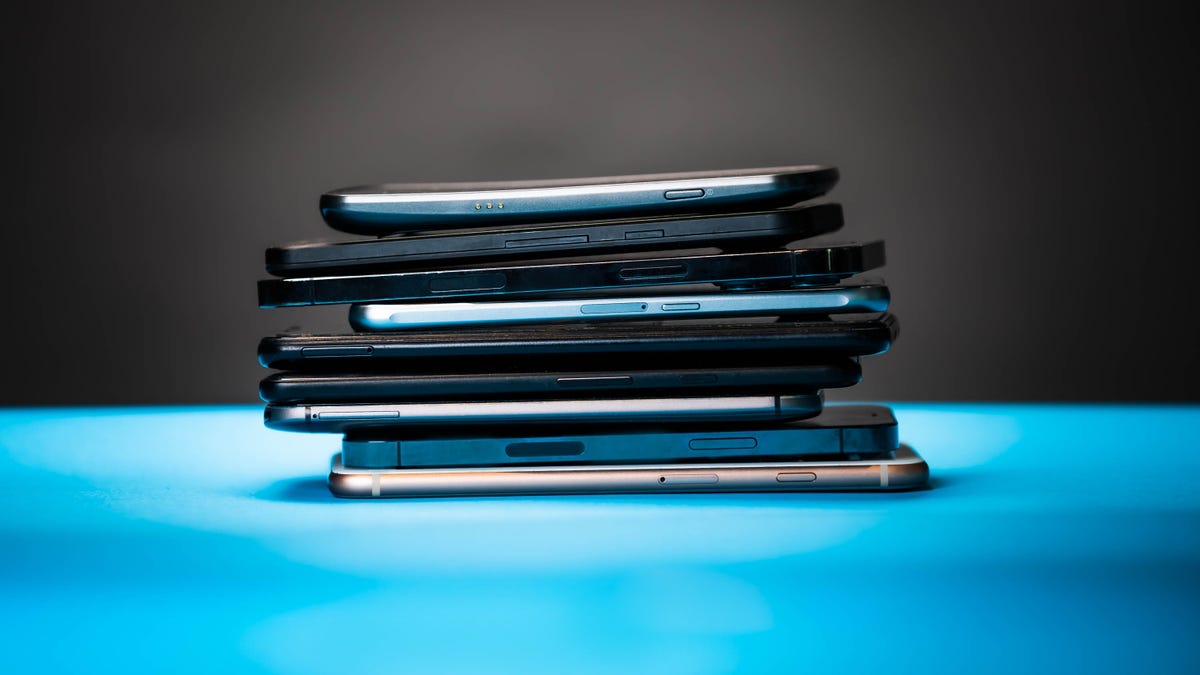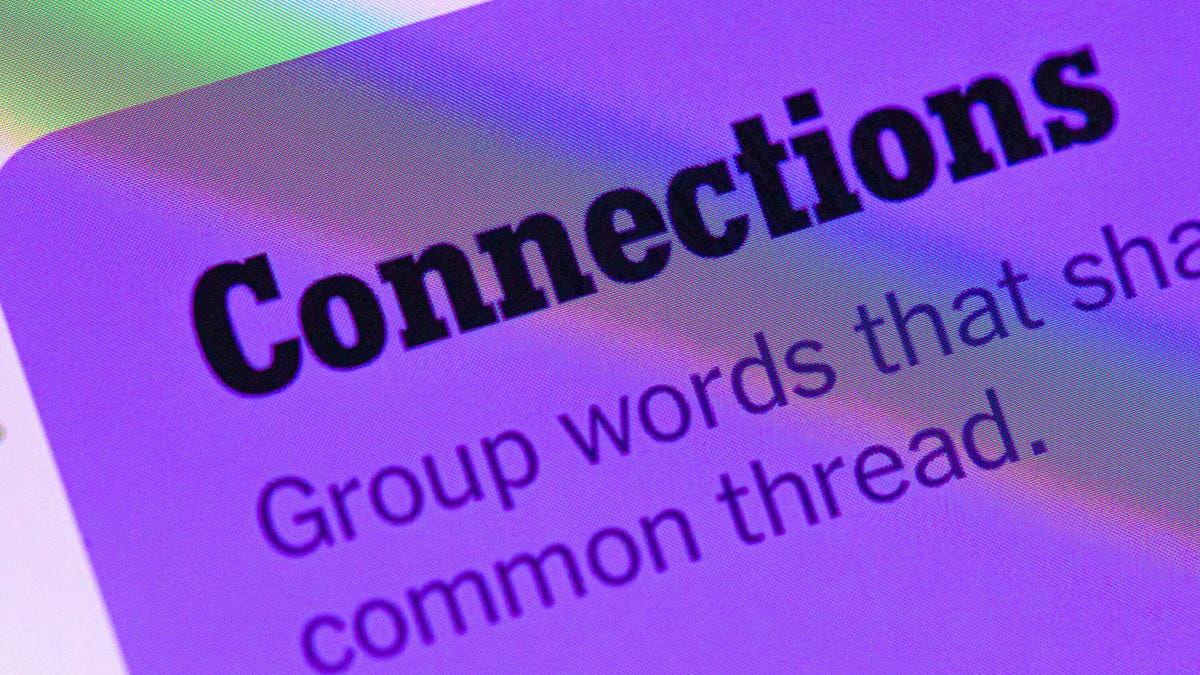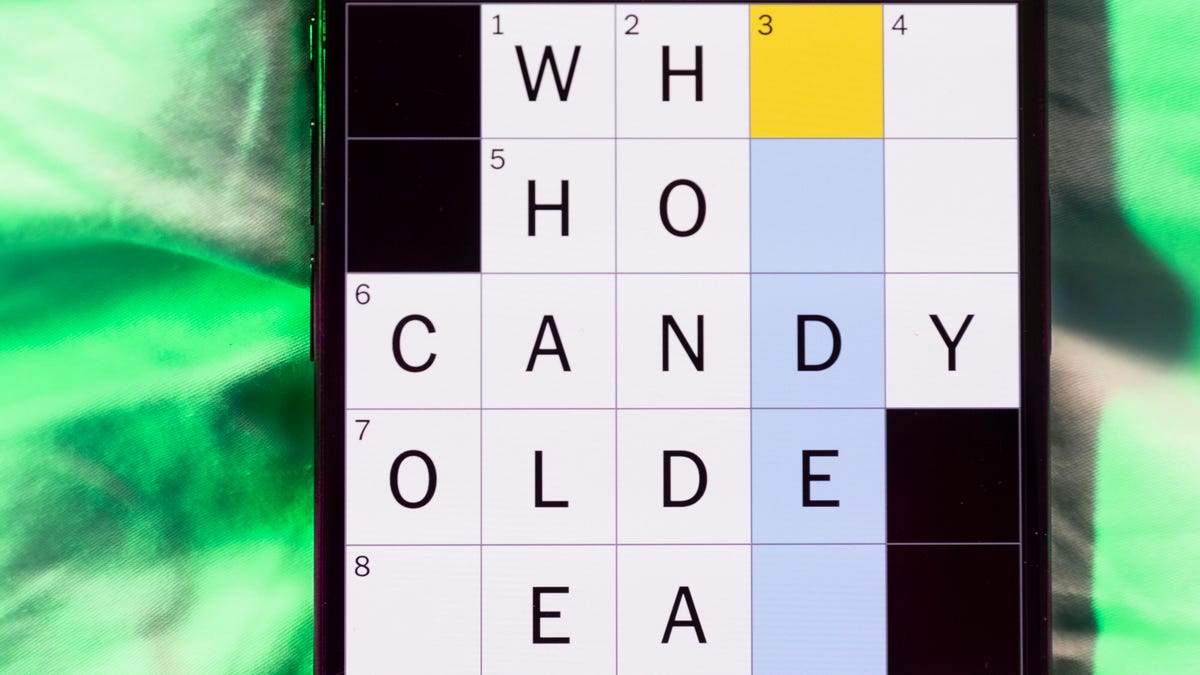Technologies
How CNET tests phones
What goes into a CNET smartphone review

Phones are much more than communication devices; they’re our gateway to the internet. They’ve become the center of our daily lives, housing our personal information, work essentials, personal memories and enabling us to reflect our personalities online. That’s why CNET conducts rigorous tests to help you find the right phone for your budget and needs.
When reviewing phones, we take a variety of factors into account such as camera quality, battery life, design, software and longevity. Every phone is different, but our testing allows us to answer the same question in each review: Is this phone worth buying? We evaluate phones based on the quality of their hardware and software, whether they introduce any meaningful new innovations and whether they’re the right price.
We replace our personal phone with the test unit during the review period so that we can get an accurate impression of what it’s like to rely on the device for daily tasks. In addition to this anecdotal usage, we also conduct specific side-by-side tests against other phones as part of the evaluation process.
We generally test phones against their immediate predecessor, competing phones from other companies or another phone within the same product line (for instance, iPhone 14 versus iPhone 14 Pro). We focus on whichever comparisons are most useful for helping our readers navigate the buying decision, and that may vary depending on the phone. Whenever possible, we work all three types of comparisons into a review.
Some of these methodologies are relatively new to CNET’s testing procedures, so you may not see them in all of our reviews from 2022. We’re in the process of updating our current reviews with these tests and plan to implement them fully in 2023.
Below is a general overview of what goes into a CNET smartphone review.
Testing smartphone cameras
The camera is the biggest area where companies like Apple, Samsung, Google and OnePlus typically make improvements to new models each year, and our reviews put phone maker’s claims to the test. We take photos in a variety of circumstances and lighting conditions, including bright outdoor areas, dim indoor settings and mixed lighting.
We capture a variety of subjects (objects, pets and people) to assess boldness, sharpness, skintones and color accuracy. We test all of the phone’s main lenses (wide, telephoto and ultrawide), front-facing cameras as well as different shooting styles, like portrait mode and night mode. Our reviews also cover useful editing features or shooting modes that are specific to the device, such as the Google Pixel 7’s Face Unblur or the iPhone’s Cinematic Mode.
Part of these tests include side-by-side photo comparisons between the phone we’re reviewing and previous phones we’ve tested. We evaluate a phone’s cameras on their consistency as well as how they stack up against the competition. All photos are straight out of camera and accessed without any edits, unless specifically noted. Beyond the initial impressions we get from viewing these photos on a phone’s screen, we also upload them to a computer and view them alongside one another on a monitor. This reduces any bias that may come from the different screens on each phone. It also makes it easier to view discrepancies in clarity and color between each photo.
We also capture video with the review phone and judge it on its image and audio quality. Just because a phone can capture 6K or 8K video doesn’t mean it’s good. Unlike the computational photography algorithms that Google, Apple, Samsung and others apply to photos, videos remain relatively less processed, making it easier to critique a camera’s strengths and flaws.
Testing smartphone performance
The performance section of our reviews examines how responsive phones are in everyday use, how well they juggle multiple tasks and how they fare during benchmark tests.
We do this by observing how quickly phones can open apps and launch the camera. We also note whether the phone has an adaptive refresh rate setting and how this improves performance if at all (for example, whether this makes animations and scrolling feel smoother). We also look for signs of lag when running multiple apps (such as using a social media app or playing a game while on a video call), or playing an online multiplayer game with the highest graphics settings.
In addition to these everyday tasks, we also run a series of benchmarks designed to test a phone’s computing power and graphics performance. These tests include Geekbench 5 for general CPU performance and 3DMark Wild Life Extreme for graphics. We also run the same tests on other phones that we’re comparing our test device to.
Testing smartphone battery life
We test battery life in three ways: through an anecdotal stress test, a video streaming test and by observing battery life after everyday use. As noted earlier, these tests are relatively new and we’re still in the process of adding them to our 2022 reviews.
The anecdotal stress test measures how much the battery drains after 45 minutes of general usage. We do a little bit of everything during this test to mimic authentic everyday experiences. That includes streaming video, using social media apps, playing a game, making a video call and other miscellaneous tasks like checking email. After this 45 minutes of mixed usage, we mark down the percentage of battery drain. To keep the test consistent between phones, we perform each of those tasks for roughly 10 minutes. We also keep the screen brightness set to 50%, turn off the always-on display and keep the high refresh rate setting on (if there is one).
The streaming test monitors how much the battery drains over a three-hour period while viewing a video on YouTube. We use the same video each time for consistency and set the screen brightness to 100%. We also disable settings that automatically dim or brighten the screen, connect to Wi-Fi and turn on the adaptive or high refresh rate setting if applicable. We take battery percentages at the one-hour, two-hour and three-hour marks.
Since we use test phones as our regular devices, we also discuss how long the battery has lasted in everyday use based on our experience. Often, our practical experience with a phone’s battery life can give us the most accurate prediction of what others might expect if they bought the same phone.
Testing smartphone design, software and display
Our smartphone reviews also encompass other areas like design, software and display quality. Design can be subjective, but we generally look for factors such as durability (water and dust resistance ratings), how easy the phone is to operate with one hand, the build quality and whether the design is unique or interesting in any way. For display quality, we’ll mention factors like brightness, how easy it is to see in sunlight and sharpness and color.
Software is another key part of CNET’s smartphone reviews. We mention any new or noteworthy features and how long the phone will support new versions of Android (or iOS respectively) and security updates.
Our written review tells you everything we feel and experienced, but we also give each phone overall score and star rating to provide a different context. A $450 phone might lack all the features that a $1,000 phone has, but its value might mean it gets a higher score. We also update these ratings based on a variety of factors, including software changes and quality control issues.
Reviews will always vary depending on the device, but these are the core tenets that make up a CNET smartphone evaluation. Determining a phone’s overall value is our guiding principle in every smartphone review. Our reviews shed light on whether a new phone lives up to its expectations, who the phone is for and whether it delivers on its promises for the price. We are always evaluating our own testing methodologies and looking for ways to improve, so expect to see more updates in the future.
Technologies
Today’s NYT Connections Hints, Answers and Help for Dec. 24, #927
Here are some hints and the answers for the NYT Connections puzzle for Dec. 24 #927

Looking for the most recent Connections answers? Click here for today’s Connections hints, as well as our daily answers and hints for The New York Times Mini Crossword, Wordle, Connections: Sports Edition and Strands puzzles.
Today’s NYT Connections puzzle is kind of tough. Ooh, that purple category! Once again, you’ll need to look inside words for hidden words. Read on for clues and today’s Connections answers.
The Times has a Connections Bot, like the one for Wordle. Go there after you play to receive a numeric score and to have the program analyze your answers. Players who are registered with the Times Games section can now nerd out by following their progress, including the number of puzzles completed, win rate, number of times they nabbed a perfect score and their win streak.
Read more: Hints, Tips and Strategies to Help You Win at NYT Connections Every Time
Hints for today’s Connections groups
Here are four hints for the groupings in today’s Connections puzzle, ranked from the easiest yellow group to the tough (and sometimes bizarre) purple group.
Yellow group hint: Cash out.
Green group hint: Chomp
Blue group hint: Walleye and salmon.
Purple group hint: Make a musical sound, with a twist.
Answers for today’s Connections groups
Yellow group: Slang for money.
Green group: Masticate.
Blue group: Fish.
Purple group: Ways to vocalize musically plus a letter.
Read more: Wordle Cheat Sheet: Here Are the Most Popular Letters Used in English Words
What are today’s Connections answers?
The yellow words in today’s Connections
The theme is slang for money. The four answers are bacon, bread, cheese and paper.
The green words in today’s Connections
The theme is masticate. The four answers are bite, champ, chew and munch.
The blue words in today’s Connections
The theme is fish. The four answers are char, pollock, sole and tang.
The purple words in today’s Connections
The theme is ways to vocalize musically plus a letter. The four answers are hump (hum), rapt (rap), singe (sing) and whistler (whistle).
Don’t miss any of our unbiased tech content and lab-based reviews. Add CNET as a preferred Google source.
Toughest Connections puzzles
We’ve made a note of some of the toughest Connections puzzles so far. Maybe they’ll help you see patterns in future puzzles.
#5: Included «things you can set,» such as mood, record, table and volleyball.
#4: Included «one in a dozen,» such as egg, juror, month and rose.
#3: Included «streets on screen,» such as Elm, Fear, Jump and Sesame.
#2: Included «power ___» such as nap, plant, Ranger and trip.
#1: Included «things that can run,» such as candidate, faucet, mascara and nose.
Technologies
Today’s NYT Mini Crossword Answers for Wednesday, Dec. 24
Here are the answers for The New York Times Mini Crossword for Dec. 24.

Looking for the most recent Mini Crossword answer? Click here for today’s Mini Crossword hints, as well as our daily answers and hints for The New York Times Wordle, Strands, Connections and Connections: Sports Edition puzzles.
Need some help with today’s Mini Crossword? I’m Irish-American, but yet 6-Down, which involves Ireland, stumped me at first. Read on for all the answers.. And if you could use some hints and guidance for daily solving, check out our Mini Crossword tips.
If you’re looking for today’s Wordle, Connections, Connections: Sports Edition and Strands answers, you can visit CNET’s NYT puzzle hints page.
Read more: Tips and Tricks for Solving The New York Times Mini Crossword
Let’s get to those Mini Crossword clues and answers.
Mini across clues and answers
1A clue: Wordle or Boggle
Answer: GAME
5A clue: Big Newton
Answer: ISAAC
7A clue: Specialized vocabulary
Answer: LINGO
8A clue: «See you in a bit!»
Answer: LATER
9A clue: Tone of many internet comments
Answer: SNARK
Mini down clues and answers
1D clue: Sharks use them to breathe
Answer: GILLS
2D clue: From Singapore or South Korea, say
Answer: ASIAN
3D clue: Large ocean ray
Answer: MANTA
4D clue: ___ beaver
Answer: EAGER
6D clue: Second-largest city in the Republic of Ireland, after Dublin
Answer: CORK
Don’t miss any of our unbiased tech content and lab-based reviews. Add CNET as a preferred Google source.
Technologies
Quadrantids Is a Short but Sweet Meteor Shower Just After New Year’s. How to See It
This meteor shower has one of the most active peaks, but it doesn’t last for very long.

The Quadrantids has the potential to be one of the most active meteor showers of the year, and skygazers won’t have long to wait to see it. The annual shower is predicted to reach maximum intensity on Jan. 3. And with a display that can rival Perseids, Quadrantids could be worth braving the cold to see it.
Don’t miss any of our unbiased tech content and lab-based reviews. Add CNET as a preferred Google source.
The show officially begins on Dec. 28 and lasts until Jan. 12, according to the American Meteor Society. Quadrantids is scheduled to peak on Jan. 2-3, when it may produce upwards of 125 meteors per hour. This matches Perseids and other larger meteor showers on a per-hour rate, but Quadrantids also has one of the shortest peaks at just 6 hours, so it rarely produces as many meteors overall as the other big ones.
The meteor shower comes to Earth courtesy of the 2003 EH1 asteroid, which is notable because most meteor showers are fed from comets, not asteroids. Per NASA, 2003 EH1 is a near-Earth asteroid that orbits the sun once every five and a half years. Science posits that 2003 EH1 was a comet in a past life, but too many trips around the sun stripped it of its ice, leaving only its rocky core. The Earth runs through EH1’s orbital debris every January, which results in the Quadrantids meteor shower.
How and where to see Quadrantids
Quadrantids is named for the constellation where its meteors appear to originate, a point known as the radiant. This presents another oddity, as the shower originates from the constellation Quadrans Muralis. This constellation ceased to be recognized as an official constellation in the 1920s and isn’t available on most publicly accessible sky maps.
For the modern skygazer, you’ll instead need to find the Bootes and Draco constellations, both of which contain stars that were once a part of the Quadrans Muralis. Draco will be easier to find after sunset on the evening of Jan. 2, and will be just above the horizon in the northern sky. Bootes orbits around Draco, but will remain under the horizon until just after 1 a.m. local time in the northeastern sky. From that point forward, both will sit in the northeastern part of the sky until sunrise. You’ll want to point your chair in that direction and stay there to see meteors.
As the American Meteor Society notes, Quadrantids has a short but active peak, lasting around 6 hours. The peak is expected to start around 4 p.m. ET and last well into the evening. NASA predicts the meteor shower to start one day later on Jan. 3-4, so if you don’t see any on the evening of Jan. 2, try again on Jan. 3.
To get the best results, the standard space viewing tips apply. You’ll want to get as far away from the city and suburbs as possible to reduce light pollution. Since it’ll be so cold outside, dress warmly and abstain from alcoholic beverages, as they can affect your body temperature. You won’t need any binoculars or telescopes, and the reduced field of view may actually impact your ability to see meteors.
The bad news is that either way, the Quadrantids meteor shower coincides almost perfectly with January’s Wolf Moon, which also happens to be a supermoon. This will introduce quite a lot of light pollution, which will likely drown out all but the brightest meteors. So, while it may have a peak of over 100 meteors per hour, both NASA and the AMS agree that the more realistic expectation is 10 or so bright meteors per hour.
-

 Technologies3 года ago
Technologies3 года agoTech Companies Need to Be Held Accountable for Security, Experts Say
-

 Technologies3 года ago
Technologies3 года agoBest Handheld Game Console in 2023
-

 Technologies3 года ago
Technologies3 года agoTighten Up Your VR Game With the Best Head Straps for Quest 2
-

 Technologies4 года ago
Technologies4 года agoBlack Friday 2021: The best deals on TVs, headphones, kitchenware, and more
-

 Technologies4 года ago
Technologies4 года agoVerum, Wickr and Threema: next generation secured messengers
-

 Technologies4 года ago
Technologies4 года agoGoogle to require vaccinations as Silicon Valley rethinks return-to-office policies
-

 Technologies4 года ago
Technologies4 года agoOlivia Harlan Dekker for Verum Messenger
-

 Technologies4 года ago
Technologies4 года agoiPhone 13 event: How to watch Apple’s big announcement tomorrow
